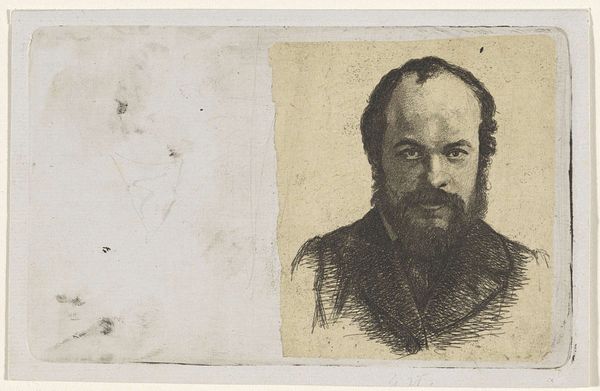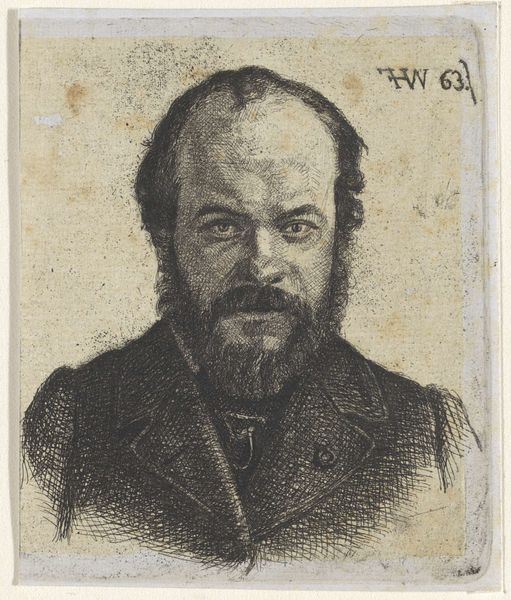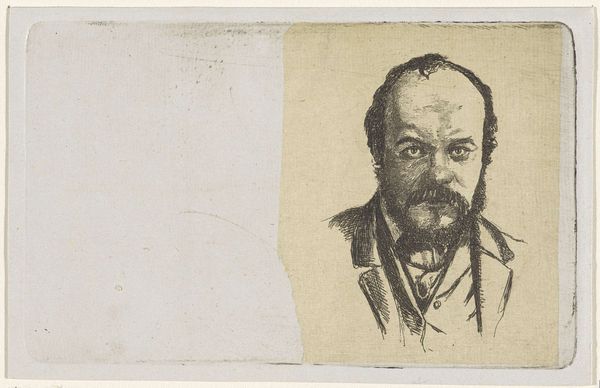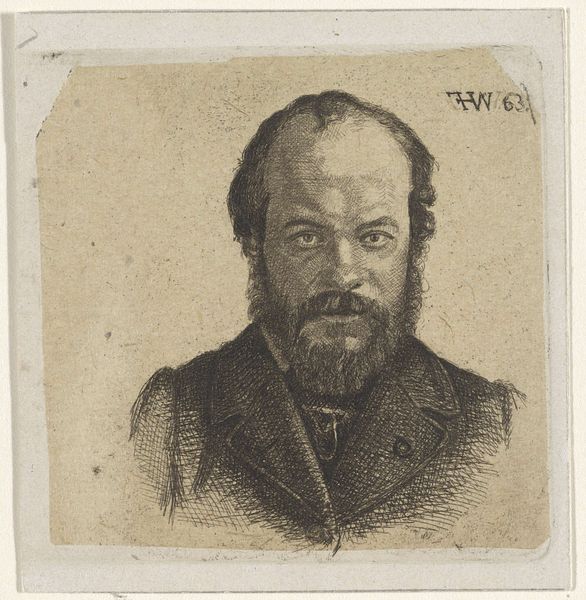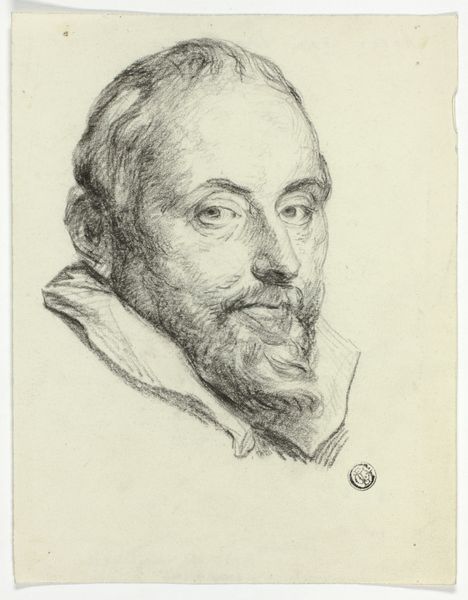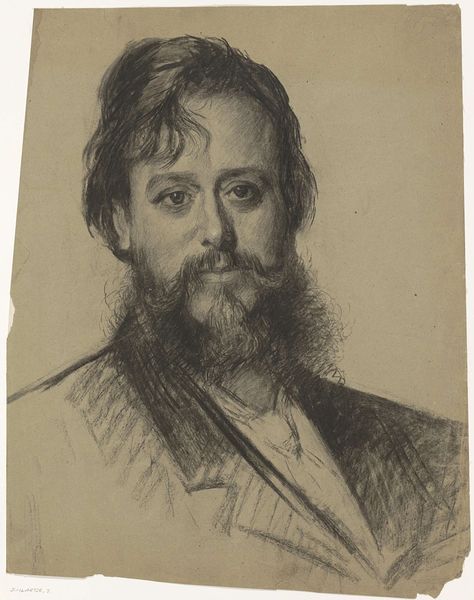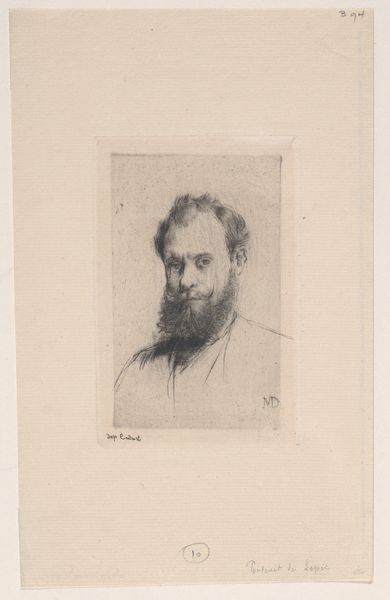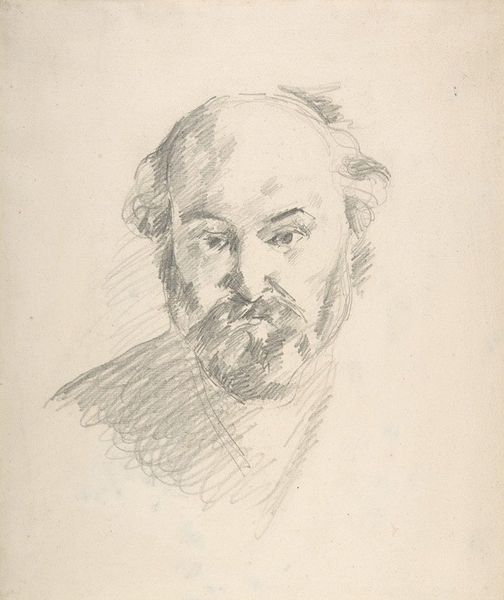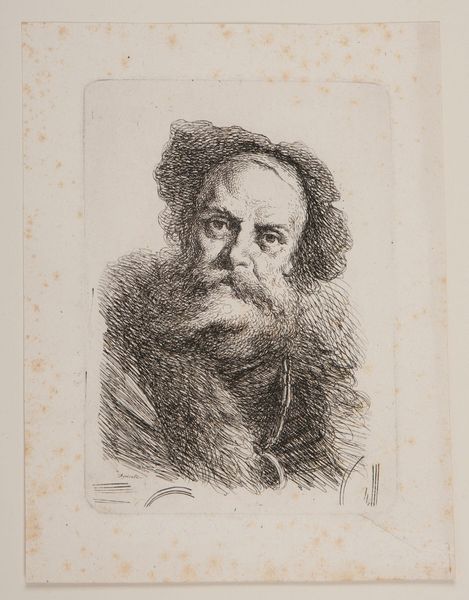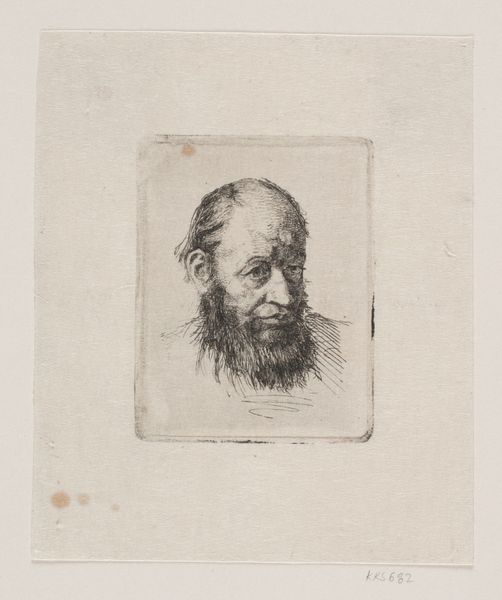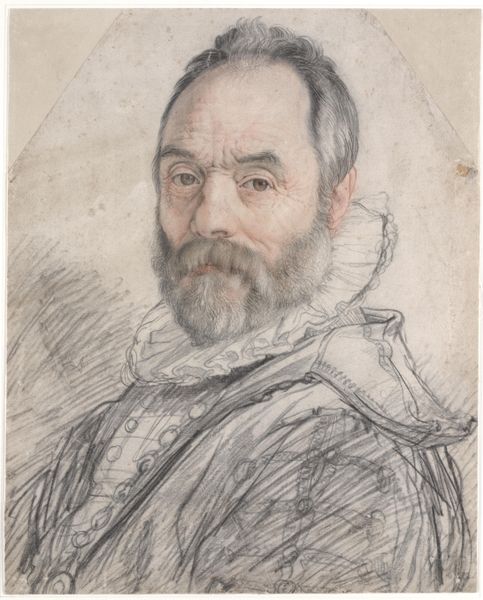
drawing, pencil, graphite
portrait
drawing
16_19th-century
pencil drawing
pencil
graphite
portrait drawing
realism
Dimensions: height 88 mm, width 140 mm
Copyright: Rijks Museum: Open Domain
Editor: Here we have Frederik Hendrik Weissenbruch's pencil drawing, "Portret van Jan Weissenbruch," created in 1863. The gaze is intense; there's a directness that feels almost confrontational. What do you see in this portrait? Curator: I see a reflection of the rapidly changing social landscape of the 19th century. Realism as a movement, wasn't just about depicting what was visible, but also about challenging academic norms that prioritized idealization. The unvarnished, almost stark portrayal here… what does that say about the relationship between artist and sitter, and even the role of portraiture itself at that moment? Editor: It’s interesting that you mention the social landscape. Does this rejection of idealization democratize the process, or does it simply offer another kind of constructed narrative? Curator: That's precisely the question, isn't it? This isn’t about surface-level representation; it invites us to consider the artist’s choices in light of societal shifts and the power dynamics inherent in the act of portrayal. The meticulous rendering, almost clinical in its accuracy, also places value in representing the human condition through art and its truth. Does it remind you of Courbet or Daumier? Editor: I can see the resemblance, yes! Considering your explanation, the image now comes across as a statement, maybe an almost rebellious declaration of artistic intent. Curator: Exactly. So, let’s remember, when viewing this portrait, we are looking not just at an individual but also at a society grappling with new ways of seeing, representing, and understanding itself. Editor: I really learned a lot from you today, this opened my eyes to a deeper, sociopolitical interpretation of art. Thanks.
Comments
No comments
Be the first to comment and join the conversation on the ultimate creative platform.
